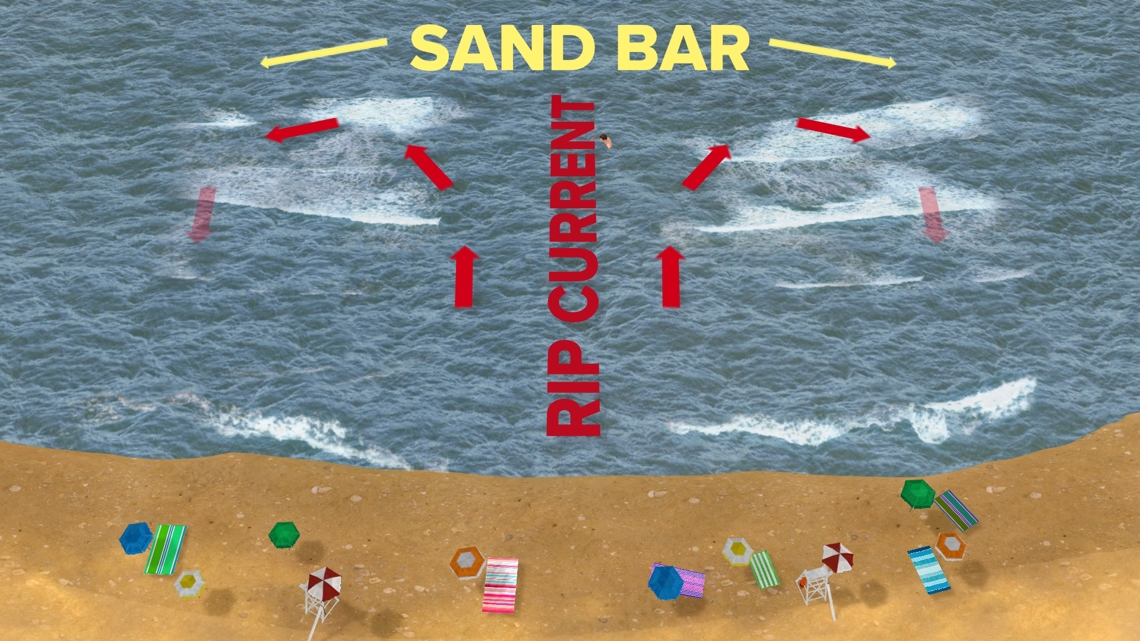ATLANTA — Beach season is here. But before you jump right in the water -- make sure to find the beach flag! Many dangers can lurk in ocean waters, including rough surf, rip currents, and marine life.
Local jurisdictions and governments install beach safety flags to help people be aware of water conditions and other hazards. Each color represents a different threat level or type. The U.S. Lifesaving Association has one of the most descriptive definitions of each flag.
According to a 2023 study from accident and injury lawyers Haffner & Morgan, LLP, more water-related beach deaths occur in unguarded areas than areas where a lifeguard is present. Rip currents lead to over 100 fatalities at U.S. beaches each year and tens of thousands of water rescues, according to the National Oceanic and Atmospheric Administration.
Especially if you have children or are not a strong swimmer, going to a beach with a lifeguard present means an extra pair of eyes will add another layer of protection. And find the beach flag before getting in the water!
What do different color flags mean at the beach?
Single red flag
USLA Definition: "High hazard. Rough conditions, such as strong surf and/or currents, are present. All swimmers are discouraged from entering the water. Those entering the water should take great care."

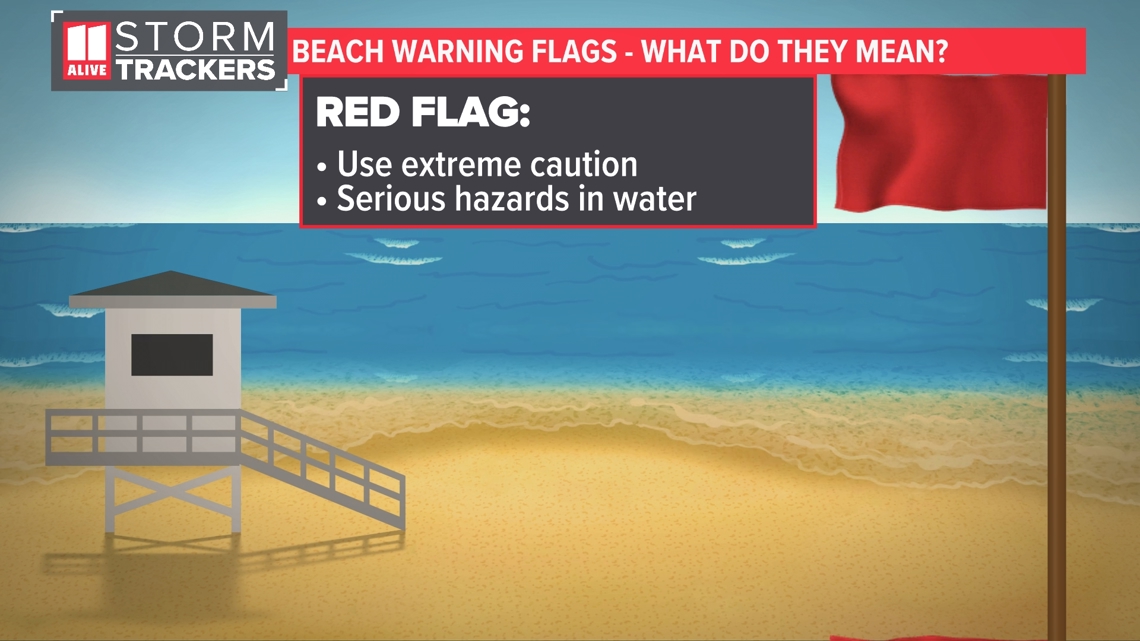
Double red flag
USLA Definition: "Water is closed to public use."

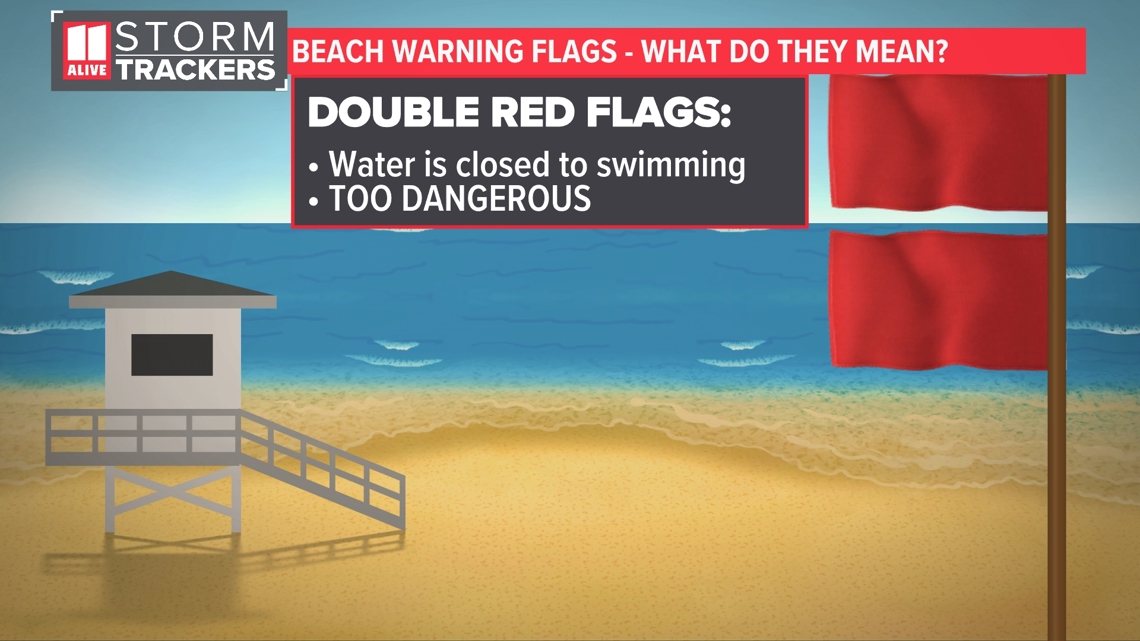
Yellow flag
USLA Definition: "Medium hazard. Moderate surf and/or currents are present. Weak swimmers are discouraged from entering the water. For others, enhanced care and caution should be exercised."

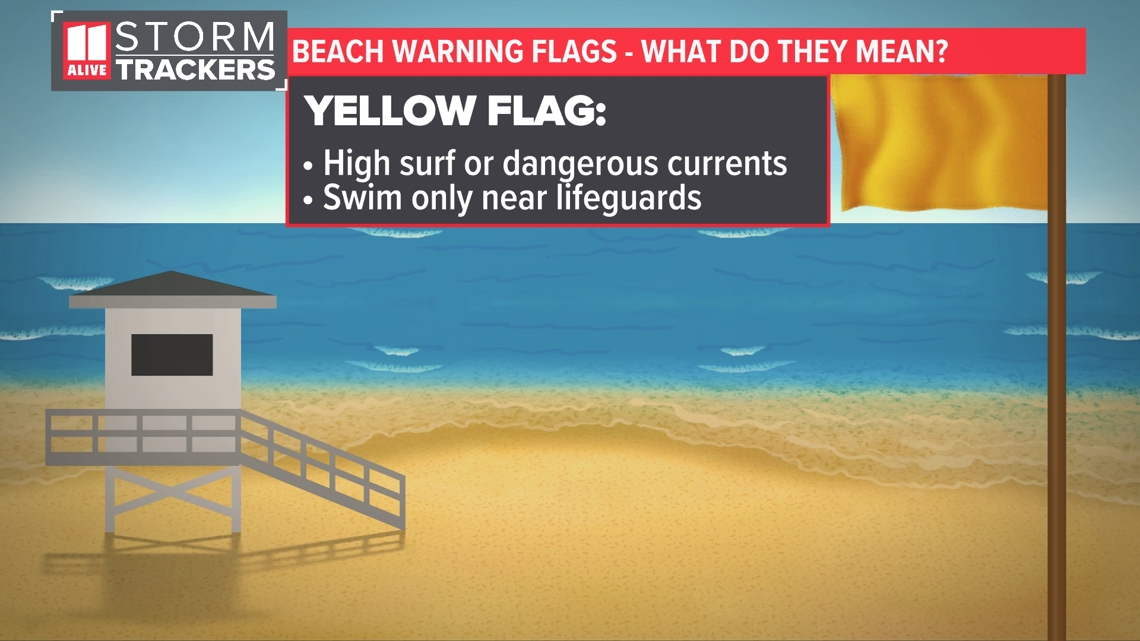
Green flag
With this flag color, the danger threat is low and it is safe for swimming.


Purple flag
USLA Definition: "Marine pests, such as jellyfish, stingrays, or other marine life, which can cause minor injuries are present in the water. This flag is not intended to indicate the presence of sharks."

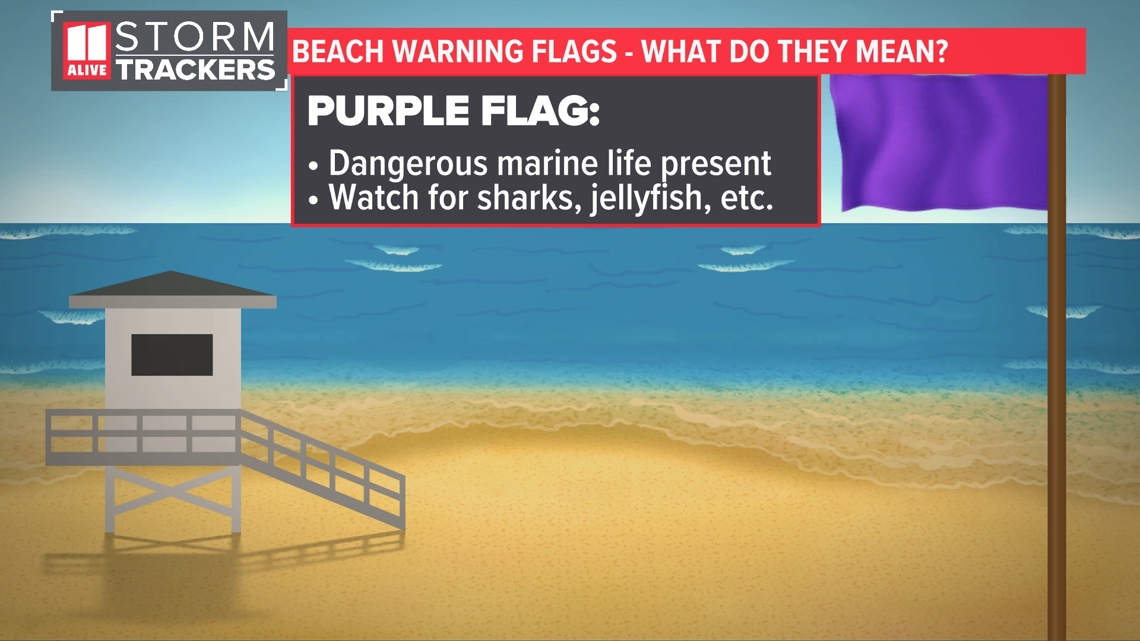
The U.S. Lifesaving Association does list other less-common flags on its website, including red/yellow halved flags, black/white quartered flags, and red/white quartered flags. You can see a complete list on its website here.
What to know about rip currents
Rip currents are strong currents in the water that flow away from the shoreline. The water appears calmer by the shore, which can be deceptive to beachgoers unaware of the hazard in the water.
These currents are moving opposite of incoming wave directions. If you try to swim against the current during a strong rip current, the current often wins.
What to do in a rip current
If you get stuck in a rip current, swim with the current out away from the shore, then off to the side and parallel with the shoreline. When you get out of the zone with the rip current, you can then swim back in towards the shore.

